Semiconductor discrete devices are part of the semiconductor industry and are one of the fundamental and core areas of the semiconductor industry. Raw material suppliers, discrete device chip manufacturers, and packaging material manufacturers are upstream customers in the semiconductor discrete device manufacturing industry; from the market application structure of domestic discrete device products, their applications cover consumer electronics, computer and peripheral markets, and network communications. , electronic equipment and instrumentation, automotive electronics, LED display and electronic lighting.
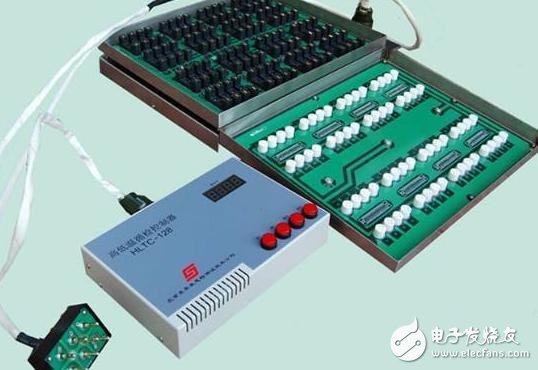
Figure 1: Industry chain structure of semiconductor discrete device manufacturing industry
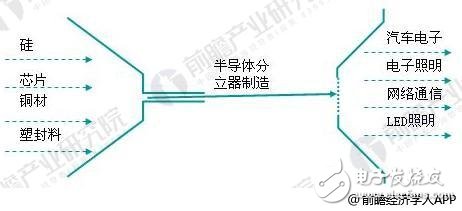
According to the materials used in discrete devices, semiconductor discrete devices can be divided into three generations. The first generation semiconductor materials are silicon elemental (Si), the second generation semiconductor materials are gallium arsenide (GaAs), and the third generation semiconductor materials are nitrided. A wide bandgap semiconductor material represented by gallium (GaN), silicon carbide (SiC), diamond, or zinc oxide (ZnO). Because silicon is simple, and it has economies of scale, low manufacturing cost, and low technical threshold, the current mainstream power semiconductor devices are still occupied by Si devices.
Metal silicon, also known as industrial silicon, is at the top of the silicon-based new material industry chain. It is not only an important material for the semiconductor industry, but also a core raw material for important sectors of the national economy such as photovoltaics and alloys. With the rapid development of China's economy in recent years, China's industrial silicon production capacity has also shown a sustained, rapid and stable development.
According to the data of the Prospective Industry Research Institute's "Foreign Industrial Silicon Smelting Industry Market Prospect and Investment Strategic Planning Analysis Report for 2018-2023", the production capacity of industrial silicon in China has increased since 2012: the industry production capacity in 2012 was about 3.6 million tons, 2015 It broke through 4 million tons and reached 4.2 million tons. As of the end of 2017, China's industrial silicon industry's total production capacity was 4.89 million tons, an increase of 290,000 tons over the previous year, a year-on-year growth rate of 6.4%.
Chart 2: Trends in industrial silicon capacity in 2012-2017 (unit: 10,000 tons, %)
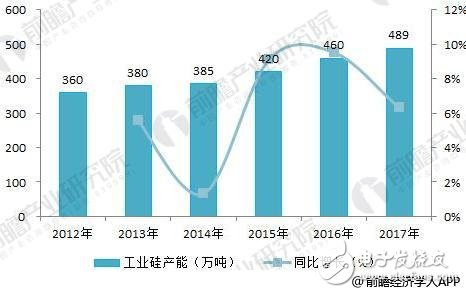
In 2016-2018, China's metal silicon prices showed an overall upward trend. As of March 15, 2018, 553 industrial silicon price was 14,900 yuan / ton, 441 industrial silicon price was 14,900 yuan / ton, 3303 industrial silicon price was 16,300 yuan / ton, 2202 industrial silicon price was 18,100 yuan / ton.
Chart 3: Domestic metal silicon price chart for 2016-2018 (unit: 10,000 yuan / ton)
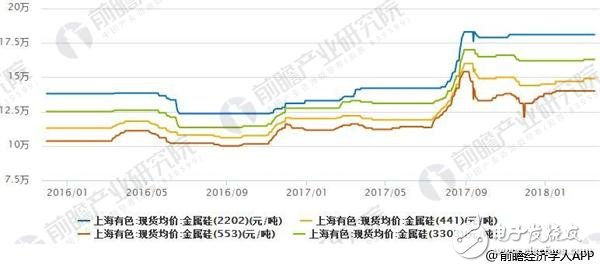
Although China's metal silicon capacity expansion tends to slow down, with the advancement of China's informationization and industrialization, the demand for high-performance, high-quality semiconductor discrete devices will expand, and the application of second-generation and third-generation semiconductor discrete devices will be expanded. The proportion will continue to increase, and the demand for Si devices will be reduced. Therefore, the future semiconductor discrete device manufacturing industry is less affected by changes in metal silicon capacity.
Upstream copper production declinedIn 2010-2016, China's copper production continued to rise, but the growth rate tends to decline. With the structural reform of supply side in China and the promotion of “de-capacity†of copper, China's copper production tends to decline. In 2017, China's copper output was 18.62 million tons, down 11.2% year-on-year.
Chart 4: Trends in China's copper production and growth rate in 2010-2017 (unit: 10,000 tons, %)
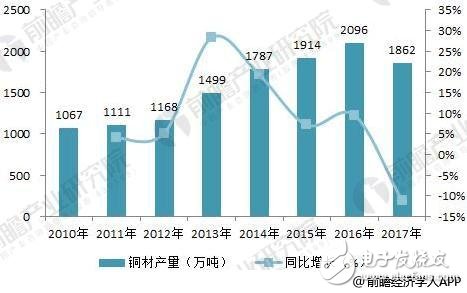
China is undergoing industrial restructuring and transformation and upgrading. The national policy point will have a greater impact on the price and market supply of raw materials in the semiconductor discrete device manufacturing industry, while the latter directly affects the production of semiconductor discrete devices.
Structural changes in downstream applicationsIn the global power semiconductor application field, the proportion of automobiles is 40%, followed by industry accounting for 27% and consumer electronics 13%. The automotive sector has continued to rise in recent years. Take high-end manufacturers as an example, high-end applications such as automobiles account for a high proportion. In particular, NXP's automotive and Iot sectors account for 86% of revenue.
Figure 5: Global semiconductor discrete device application domain structure (unit: %)
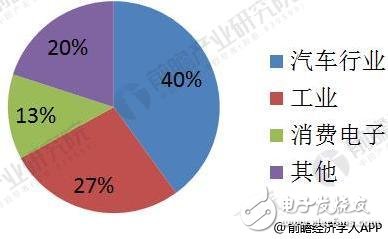
At present, the application field of semiconductor discrete devices in China is slightly unreasonable. The fields of network communication, consumer electronics, computers and peripherals account for a large proportion, and the proportion of automotive electronics applications is far below the global average.
In the traditional internal combustion engine vehicle manufacturing industry, the discrete component usage in a single vehicle is only $71. The new energy vehicle's single discrete component usage reached $ 387, more than five times the amount of traditional car vehicles. With the rapid development of China's new energy auto industry, as well as the rapid enhancement of the R&D and innovation capabilities of domestic enterprises and the pressure factor brought by capacity transfer, the proportion of high-end applications such as domestic autos will also move closer to the global market.
Our Professional 100W solar panel manufacturer is located in China. including Solar Module. PV Solar Module, Silicon PV Solar Module, 100W solar panel for global market.
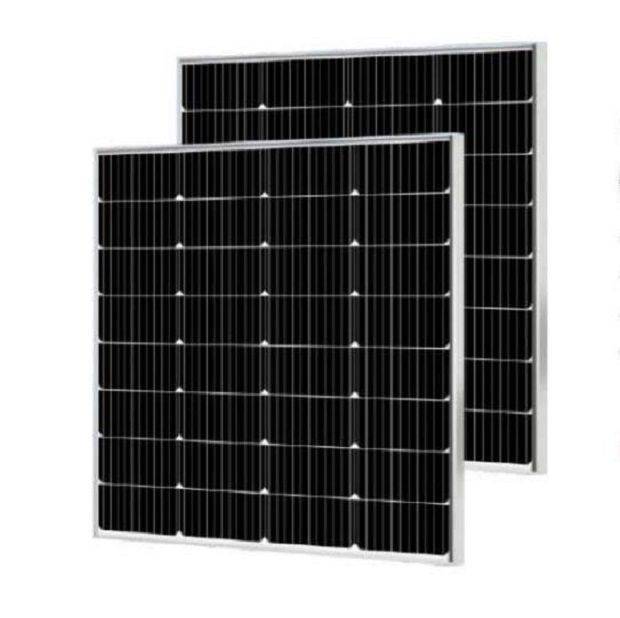
100W solar panel, Solar panel, PV solar panel, Silicon solar panel 100W
Jiangxi Huayang New Energy Co.,Ltd , https://www.huayangenergy.com